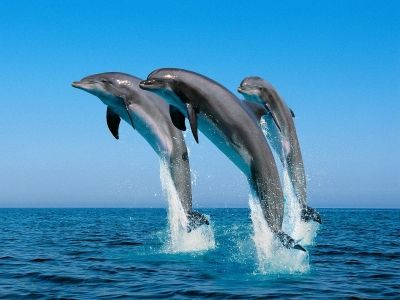
The dolphin, a friendly marine creature, is the symbol used to represent Greece. Etymologically speaking, the word ‘dolphin’ comes from the ancient Greek delphis, itself related to the Greek delphus, or womb, so the animal’s name more or less means ‘a ‘fish’ with a womb.’ As such, the dolphin’s role in human culture can be traced back to ancient times, where they appear in many myths.
Although dolphins are widespread, most species prefer the warmer waters of the tropic zones, but some, like the right whale dolphin, prefer colder climates. Dolphins feed largely on fish and squid, but a few, like the killer whale, feed on large mammals, like seals. Male dolphins typically mate with multiple females every year, but females only mate every two to three years. Calves are typically born in the spring and summer months and females bear all the responsibility for raising them. Mothers of some species fast and nurse their young for a relatively long period of time. Dolphins produce a variety of vocalizations, usually in the form of clicks and whistles.
Dolphins are sometimes hunted in places such as Japan, in an activity known as dolphin drive hunting. Besides drive hunting, they also face threats from bycatch, habitat loss, and marine pollution. Dolphins have been depicted in various cultures worldwide. Dolphins occasionally feature in literature and film, as in the film series Free Willy. Dolphins are sometimes kept in captivity and trained to perform tricks. The most common dolphin species in captivity is the bottlenose dolphin, while there are around 60 captive killer whales.
Picture Credit : Google




